When September comes to Chianti, I go to Chianti too!
The wine harvest fills the air with drunken perfume, too strong to ignore.
Grape must fermenting , sends me spinning every breath.
Indian summer skies with a light that explains why so may great artists came and stayed.
A new color palate is required.
As we toured Chianti, the sunny days quickly slipped into chilling rain and the forests quickly splashed the hills with golden leaves and the vineyards with their turning colors.
Tiny villages, away from the crowds, fabulous food at every meal.
Rib-sticking soups like Ribollita, the re-boiled minestrone with Tuscan bread
is perfect to take away the chill.
We travelled the 222 road from Florence to Siena.
Lazily exploring the tiny hill towns and villages but nothing is like Siena.
I adore Siena. Still surrounded by the walls of the city, the spirit of it’s past is still alive today both in the vista’s and in the soul of the Sienese people.
I am always blown away by the magnificence of Siena’s Cathedral, the Duomo. We were lucky to find the incredible mosaic floors uncovered and visible.
Allow yourself enough time to slowly meander through this magnificent city.
Best explored with a guide to show you more than the eye can see.
Warm yourself up with a bowl of soup
Ingredients
- Ribollita (Tuscan Vegetable and Bread Soup)
- Tuscan cuisine is famous for giving new life to leftovers.
- This dish is a perfect example. An icon of Tuscan cuisine, ribollita literally means “reboiled.” It's difficult to find an authentic ribollita because it takes 3 days to prepare.
- Minestrone is made the first day and eaten as is.
- The second day the leftover soup is layered with thin slices of bread (or toasted bread rubbed with garlic) and baked with thin slices of red onion on top.
- The third day the leftovers are reboiled.
- Recipes for minestrone vary from region to region, restaurant to restaurant, and household to household. Most recipes are based upon regional produce. The most important ingredient is Tuscan minestrone is cavolo nero, or a winter black cabbage. Its leaves range in color from dark green to almost black. Once grown only in Tuscany, enterprising farmers in California's Salinas Valley are now growing it along with Royal Rose radicchio. If you cannot find black cabbage, substitute kale, chard, or use only Savoy cabbage.
- 4 tablespoons olive oil
- 1 red onion, chopped
- 1 leek, white part only, chopped
- 1 garlic clove, chopped
- 4 carrots, sliced into half-inch rounds
- 4 zucchini, sliced into half-inch rounds
- One-quarter whole Savoy cabbage, shredded and chopped
- 1 bunch cavolo nero or kale
- 1 small bunch spinach, shredded and chopped
- 4 potatoes, peeled and cut into one-half inch cubes
- 1 cup green beans, cut into bite-size pieces
- 2 cups Tuscan white beans, one-half cup pureed and one-half cup whole
- 2 tablespoons coarse sea salt or kosher salt
- 4 tablespoons tomato paste
- 1 pound stale Italian bread, sliced
Instructions
- Heat the olive oil in a large pot and sauté the onion and leek together over low heat until they begin to burn slightly.
- Add the garlic and sauté for 1 minute.
- Add all the remaining vegetables.
- Season with sea salt and stir to mix in the onions and leeks evenly.
- Cover and cook for 20 minutes or until the vegetables have reduced in volume by half.
- Stir again and cover with water to the top of the pot.
- The more water you add, the more broth you will have with the soup.
- Bring to a boil and then lower the heat.
- Add the tomato paste and stir to dissolve.
- Cover and cook the soup for 1 hour.
- Add the Tuscan beans.
- This is the minestrone soup.
- The next day layer the soup in a deep baking dish with the stale bread and bake.
- Top with thinly sliced red onions before baking.
- The next day, if there's any soup left over, reboil the soup, stirring well to break up the bread slices. The soup should be thick enough to eat with a fork!
- It's served with the traditional drizzle of extra virgin olive oil on top.
Buon Appetito!
Buon Autunno!

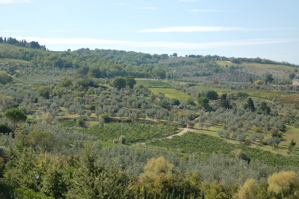

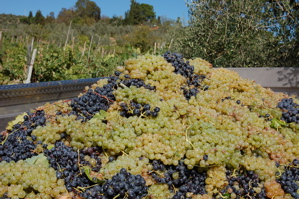

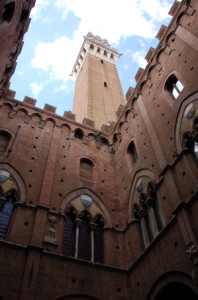
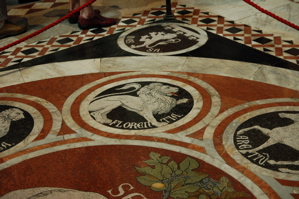
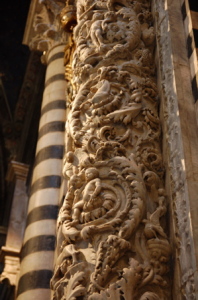

What a delicious visit you’ve given us – makes me feel like I’m right there!
Thanks, Judy!
This is great – I had never seen a real recipe for ribollita before! Thank you so much, I can’t wait to try it even if I’ll have to substitute chard.
A steaming bowl of ribollita on this chilly Sunday morning! Merci Judy for the recipe.
Judy – I also turn to comfort foods when the weather turns chilly. Soups, stews, and braises will all soon be on the menu.
Today Paul and I went apple picking and tonight we’re having a tuscan apple torte for dessert. YUM
Judy, Just stumbled across your blog, you made me recall our wonderful trip to Florence! Every day we had a bowl of Ribolita, it’s so nice to have an authentic recipe. I’ll be back!!